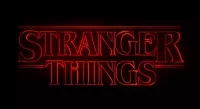Trending

9 months ago Calipari's Departure Impacts Kentucky, Arkansas, BYU, Texas Tech Game Clock Malfunction in Sweet 16
James Patrick Jim Moran Jr is an American politician who served as the mayor of Alexandria Virginia from to He...

25 days ago Nina Dobrev enjoys Mexican getaway with friends after Shaun White split, finding beach vibes.
2 months ago Omarion Hampton, Derwin James, Tarheeb Still face injuries: Updates and impact on teams.
8 months ago Rowland grabs pole, Buemi wins after Monaco E-Prix 2025's wet chaos.
Kimani Vidal is an American football running back currently playing for the Los Angeles Chargers in the NFL He was...
Popular

XXXTentacion born Jahseh Dwayne Ricardo Onfroy was a controversial yet...

Stranger Things created by the Duffer Brothers is a popular...

Candace Owens is an American conservative political commentator and author...
The Kennedy Center Honors are annual awards recognizing individuals and...

Ben Shapiro is a prominent American conservative political commentator media...

William Franklin Graham III commonly known as Franklin Graham is...